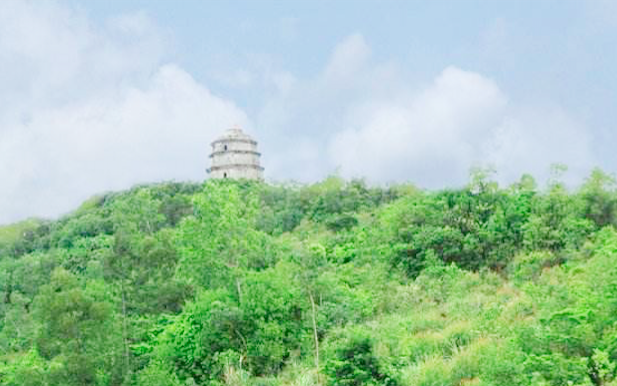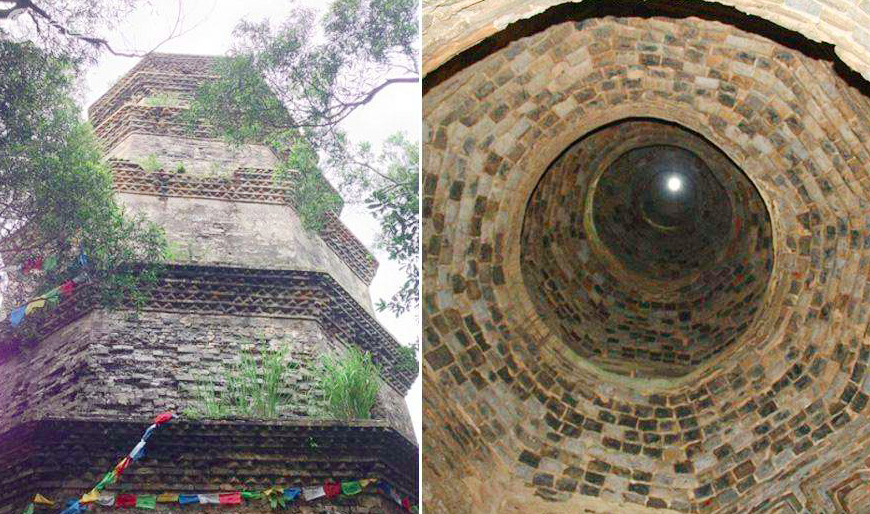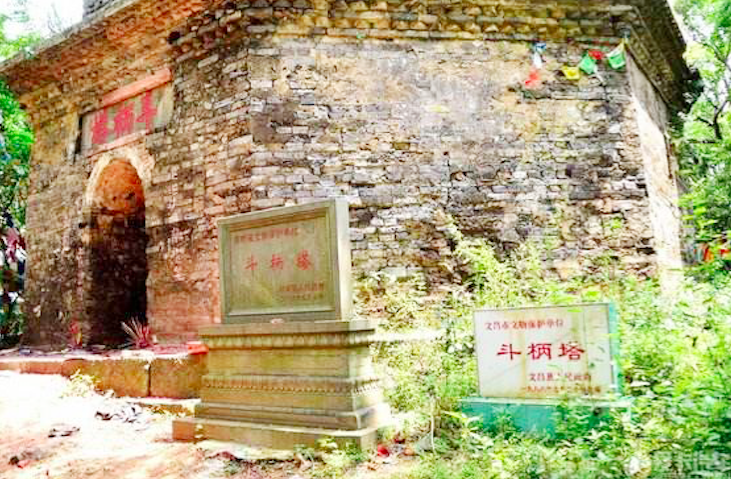The unique architecture of the Chinese pagoda has a history dating back more than one thousand years. Tower building in China probably started with the construction of watchtowers to warn of invading armies. With the introduction of Buddhism from India, the religion’s stupa towers influenced pagoda architecture. Whilst some served as Buddhist places of worship, other pagodas memorialized famous local dignitaries or were built to wield a positive geomantic influence over the surrounding area. Although pagodas are found throughout China, they are primarily concentrated in the south of the country. Hainan probably has the highest density of pagodas of any province based on the number constructed in comparison with the overall land area.
History
Rising majestically from the main peak of the Qixing Ridge in the northeastern coast of Hainan, the Doubing Pagoda resembles a flower stem sprouting up from the mountain. Built in 1625 during the Ming Dynasty (1368-1644 CE,) the pagoda was renovated in 1887, in the twelfth year of the reign of Qing Dynasty Emperor Guangxu who reigned from 1875-1908.
Architecture
It is an octagonal structure with eight flat sides and seven stories constructed of layers of straight and triangular bricks that rise unevenly to the eaves. Each story has an arched doorway, whilst inside there is a spiral staircase consisting of 104 steps which reaches to the top of the pagoda. The overall height of the structure is 20 meters, although the former block and pulley system at the top has rotted away. The base is 44.8 meters in circumference with walls that are 3.55 meters thick.
Age and Restoration
On the door above the west side there is a stone plaque bearing an inscription of the three characters of the pagoda’s name in Chinese and next to that the words “completed in the first winter month of the reign of the Tinaqi Emperor” which dates the structure to the year 1625. A further inscription records that “The pagoda was repaired in 1887 by Qing Emperor Guangxu.”
The Doubing Pagoda faces towards the Qionghai Strait that separates Hainan from the mainland. In former times many merchant vessels passing through this channel were shipwrecked due to the lack of marker buoys, although superstitious locals believed that these were actually caused by demons reputed to haunt the area.
During the Ming Dynasty, a local man from the town of Ding’an called Wang Honghui, who was the Director of the Confucian Boards of Rites, decided after his official retirement to pursue the twin goals of installing marker buoys in the Qionghai Strait and driving away the demons. To this end, he invited the local people to send a memorial to the imperial court requesting that funds be set aside for the construction of a pagoda.
The Doubing Pagoda with its tall and straight structure is a model of staid dignity with natural poise that rises to the skies in a grand and imposing manner. The building has seen great changes over time, braving the wind and refusing to yield to the rain whilst surviving countless typhoons and thunderstorms. Its majesty intact, the pagoda has bravely witnessed Hainan in perilous times, silently gazing northwards onto the rolling fields. Not only a channel marker for merchant ships and fisherman, the pagoda is also an invaluable resource for research into the history of pagodas in Hainan.
Related article: Cycling in Hainan – Routes, rentals and where to stay









